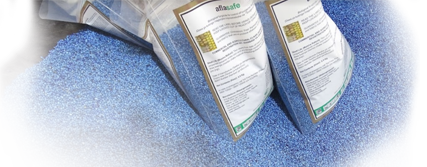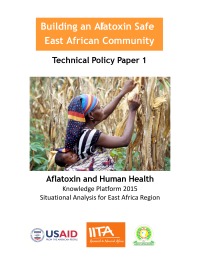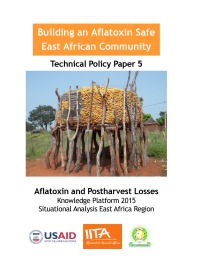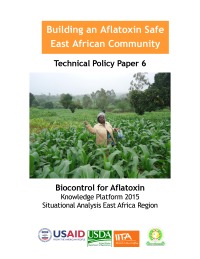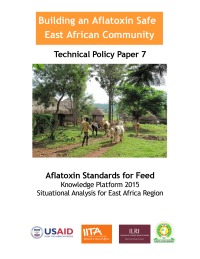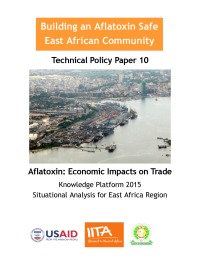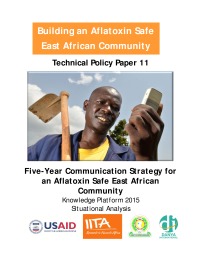This series of technical policy papers from 2015 provides detailed analyses on themes relating to Building an Aflatoxin Safe East African Community, offering numerous policy recommendations.
The control of aflatoxin throughout the value chain is an important element of the larger food security and food safety profile of a region, a nation, and a community. There are a number of critical points—as commodities are harvested, stored, traded, and processed into foods...
Adequate nutrition from conception to two years of age is the cornerstone for the establishment of good health, intellectual development, and economic productivity throughout a child’s future life. The consequences of malnutrition during the first 1,000 days of life are profoundly detrimental...
Viral hepatitis affects hundreds of millions of people worldwide, causing serious chronic illness from acute liver infection. This often progresses to cirrhosis and hepatocellular carcinoma (HCC). Hepatitis A virus (HAV) and hepatitis B virus (HBV) infections contribute to a large proportion...
Livestock makes an important contribution to the economic livelihoods and nutritional wellbeing of people throughout East Africa. During 2104, livestock contributed to 9 percent of the gross domestic product (GDP) of Burundi, 9 percent in Kenya, 10 percent in Rwanda...
This document focuses on the junction between aflatoxins and postharvest losses, which together can: a) lessen the availability, marketability, or suitability for consumption or processing of affected agricultural products; b) contribute to pathology in humans, animals, and plants...
Scientists have long been aware of high levels of aflatoxin contamination in the African food supply, and have known for over two decades the detrimental effects of aflatoxin ingestion on human and animal health. However, ameliorating these risks has proven to be a complex undertaking...
This report presents the process, knowledge base, and logic for the development of standards for aflatoxin levels in animal and fish feeds in the East Africa region. The purpose of this discussion is to equip the East African Community (EAC) and its partner states...
Ensuring the safety of the food supply is a responsibility shared by the public and private sectors. This includes international regulatory agencies and national governments, as well as food producers, processors, and traders. Most often evaluating food safety is based on established...
Contamination of agricultural commodities, including maize, groundnuts, cassava, milk, and cottonseed with aflatoxin poses a serious threat to human and animal health, and to the economies of the East Africa region. Physiologists and toxicologists have clearly established the hazard...
Agribusiness comprises a significant proportion of the gross domestic product (GDP) for all countries across the African continent, with agriculture by far the largest sector for employment. The value chain is characterized by a network of formal and informal traders that has evolved over centuries...
Clear, accurate, and effective communications are pivotal to the EAC realizing our vision for an “aflatoxin safe East African Community” (EAC) over the next 5 years. To achieve this vision our communications must be context specific, culturally appropriate, reflect gender sensitivity...

